Written by Rachel Drietz under the direction and review of David Graper. Drietz was a student in Dr. Graper's Herbaceous Plants class. One of the last assignments for the class was to write an outreach paper. Several of the best ones are published through SDSU Extension.
What Is a Sensory Garden?
A sensory garden is a garden that has a collection of plants that are appealing to one or more of the five senses; sight, smell, sound, taste, and touch. Sensory gardens should be accessible for all people to enjoy - disabled and non-disabled. Sensory gardens are typically geared towards young children, but are enjoyed by people of all ages.
Appealing to Sight
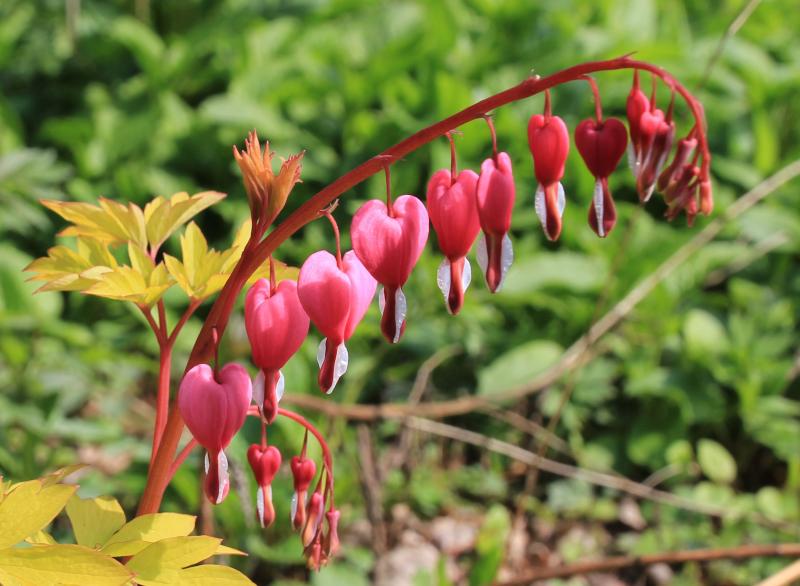
Bleeding Heart
Bleeding hearts (Dicentra spectabilis) grow to a height of 2 to 3 ft. and flower May to June. The flowers look like downward-facing hearts that grow on gently arching horizontal stems. Flower color may be white, pink or red. The foliage is usually dark green but a variety with chartreuse foliage is also available. This hardy perennial performs best in part-sun to shade and prefers a site that has fairly consistent moisture
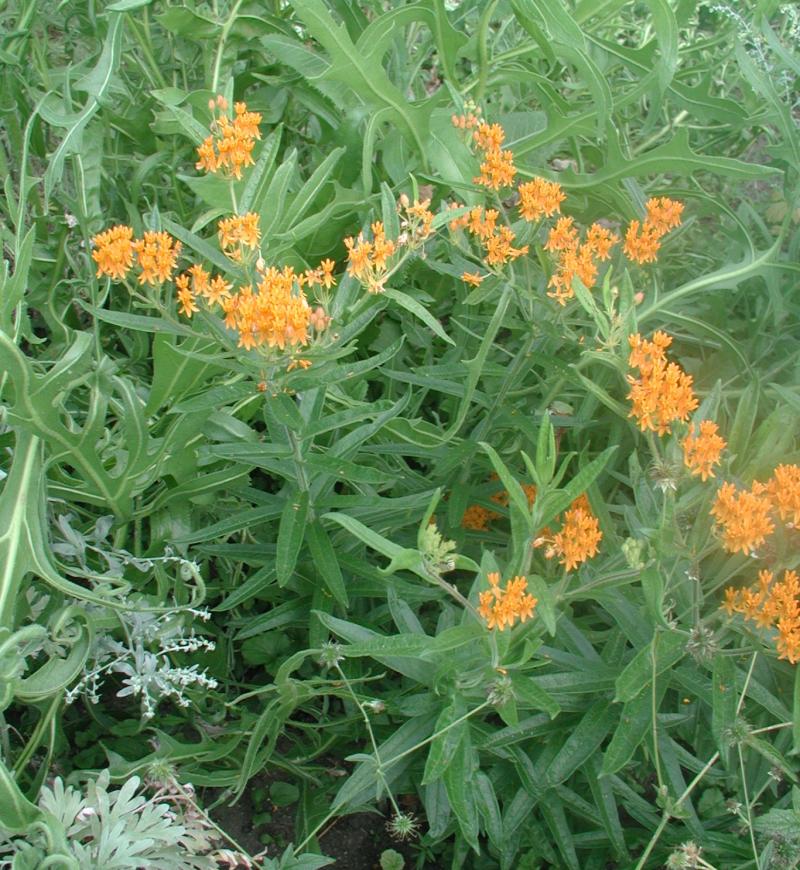
Butterfly Weed
Butterfly weed (Ascelpias tuberosa) grows to a height of 1 to 2 1/2 ft. with a spread: 1 to 1 1/2 ft. Bright, showy yellow to orange flowers are produced from June to early September. Besides having the pretty flowers, butterfly weed is a primary food source for butterflies, especially the Monarch butterflies, which rely on this plant, and other members of the milkweed family, as food source for their larva. Butterfly weed grows best in full sun, is drought tolerant once established is a hardy, long-lived perennial.
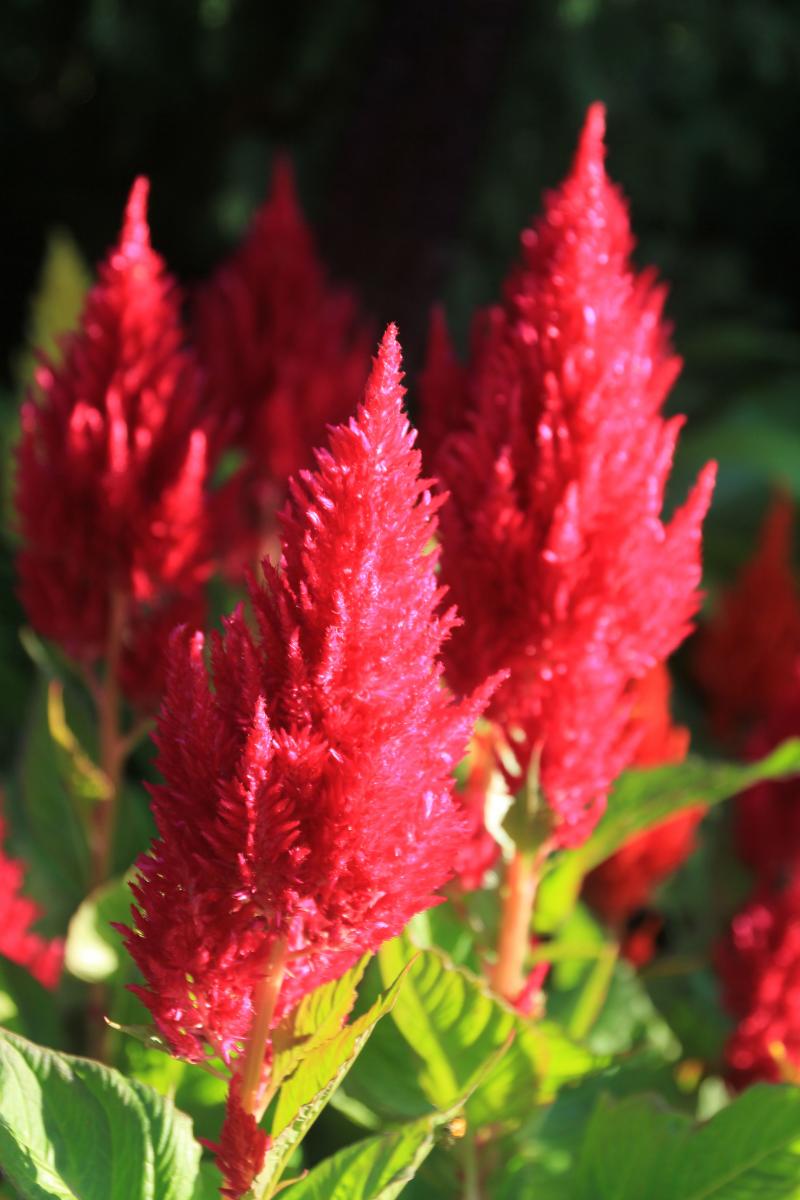
Cockscomb
Cockscomb (Celosia argentea) grows to a height: 1/2 to 2 ft. with a similar spread. It produces a feather-like, showy flower spike that comes in a variety of colors including white, pink, red, yellow, orange, lavender and peach. Flowers first appear in June and continue until frost. The flowers may also be used as a fresh or dried cut flower. Cockscomb grows best in full sun.
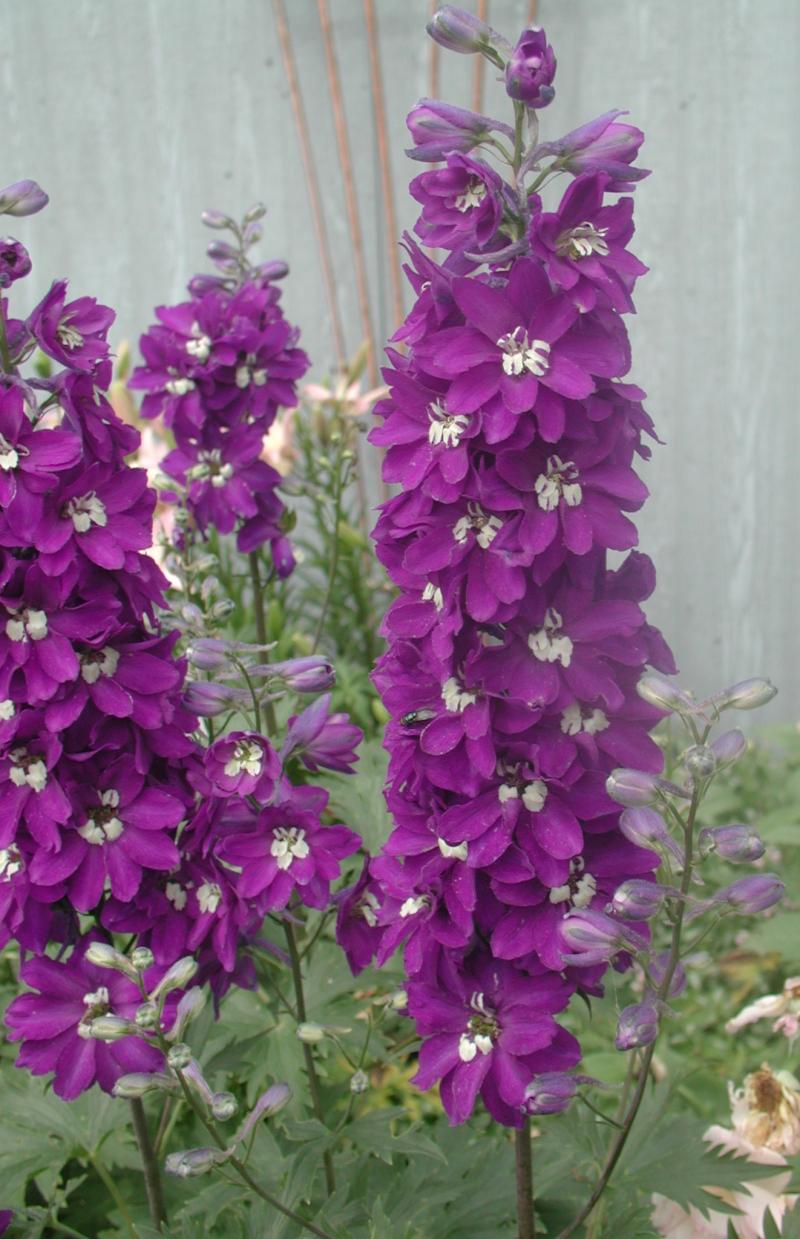
Delphinium
Delphinium (Delphinium hybrid) grows from 1 to 4 ft. in height or more depending on the variety. It appeals to sight with its tall spikes of showy flowers which develop in June to July then possibly again in September. The flowers may be enjoyed in the garden as well as in the home since they make an excellent cut flower. Flowers may be white, pink, lavender, blue, purple or multi-toned. Plants perform best in full sun with protection from the wind.
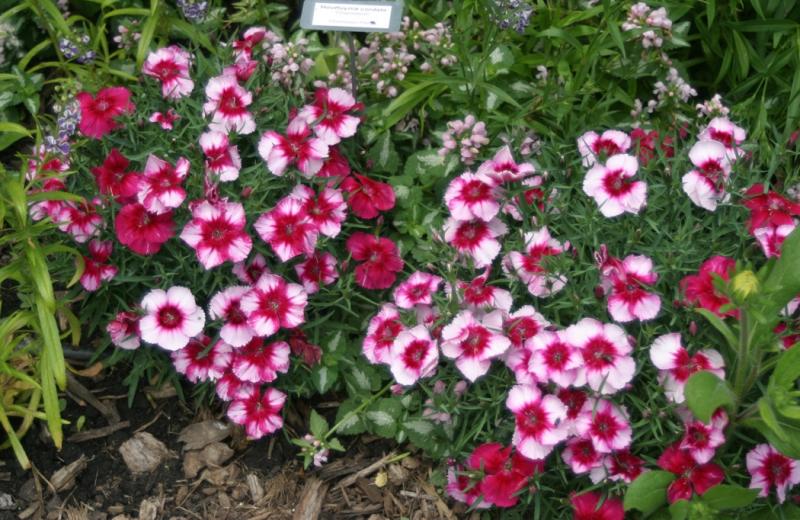
Garden Pinks
Garden Pinks (Dianthus hybrid) grow to a height of 8 to 12 inches and bloom from spring until a killing frost in the fall. The plants produce many thin stems topped with several bright flowers that may be white, pink, lavender, red, or multi-toned. The flowers have a slight spicy aroma so they also appeal to the sense of smell as well. Pinks are usually grown as annuals in sun to part sun but may sometimes over-winter.
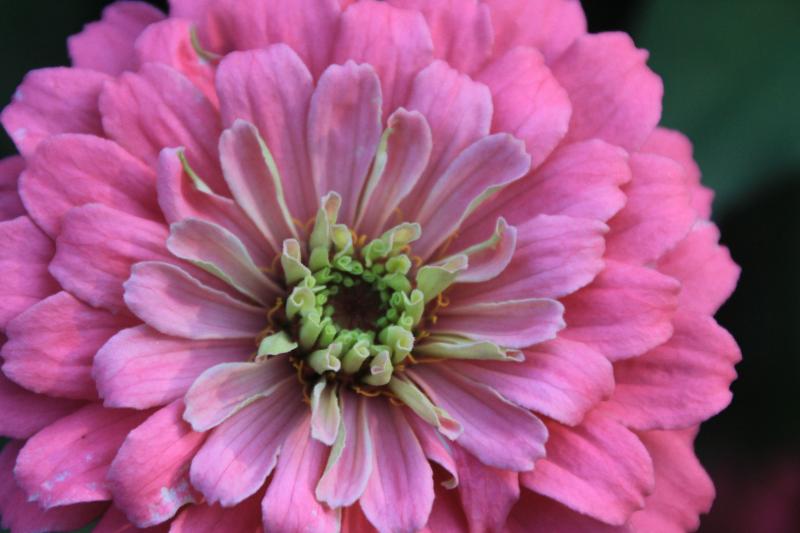
Garden Zinnia
There are many kinds of zinnias (Zinnia elegans) so one can find cultivars that will range in height from 1 to 4 ft. with a spread of 9 to 30 inches. Zinnias appeal to sight with their showy flowers and because they often attract butterflies. Zinnias begin blooming in June and will continue until frost. The flowers are available in a wide variety of colors and they also make excellent cut flowers. Zinnias are annuals that perform best in full sun.
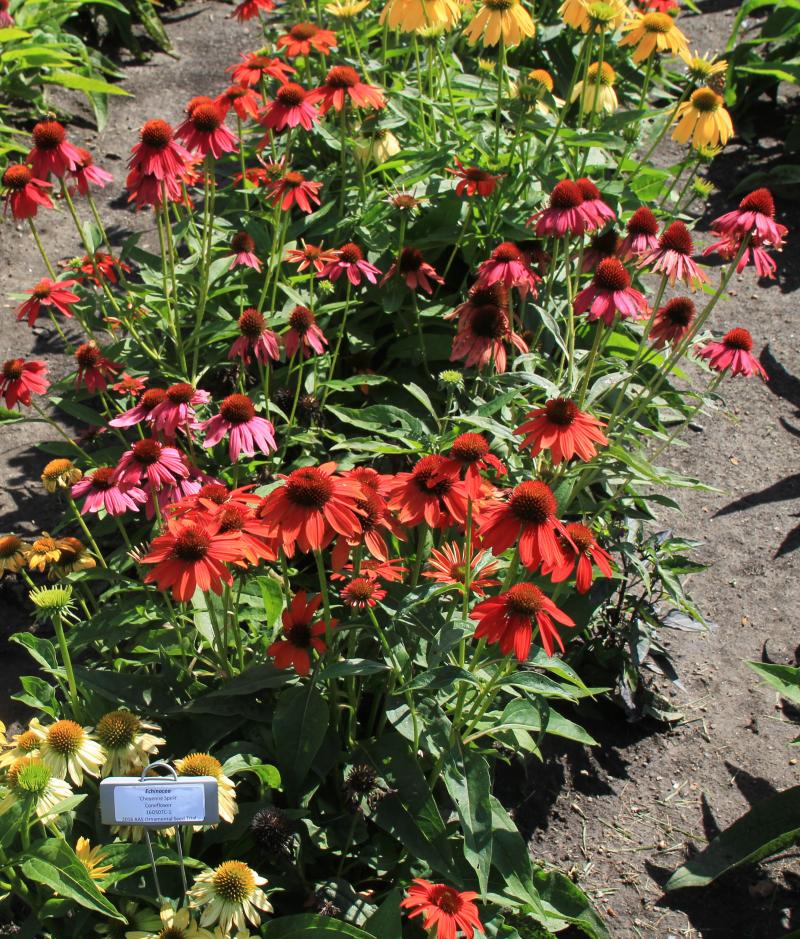
Purple Coneflower
Purple coneflowers (Echinacea purpurea) usually grow to a height: 2 to 3 ft. with a spread 1 to 2 ft. They appeal to sight with their showy flowers and because they often attract butterflies and later, small seed-eating birds. They bloom from July to a hard freeze in the fall. Varieties are now available with flowers in a wide array of colors ranging from white to pink, purple, yellow, orange, red, and peach with different types of flowers as well. Plants are also drought tolerant once established and perform best in full sun.
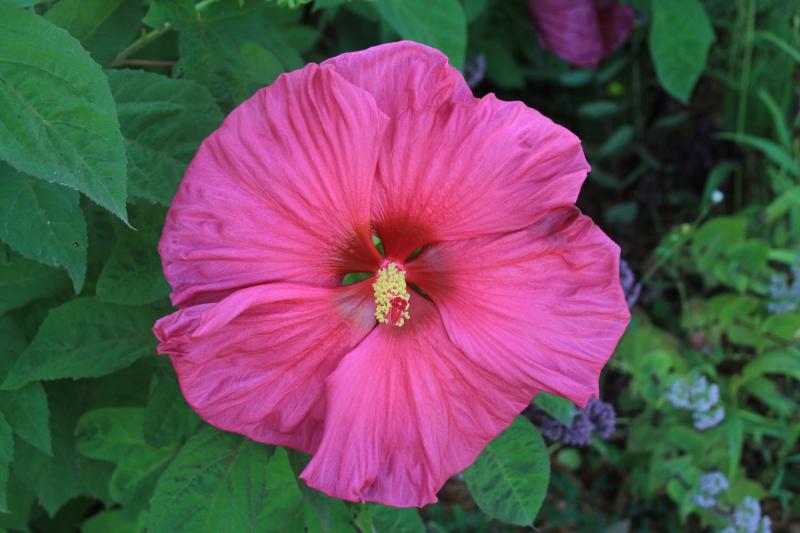
Rose mallow
Rose mallow plants (Hibiscus moscheutos) are perennials grow to be quite large each year, reaching 3 to 4 ft. in height with a 2 to 3 ft. spread. They bloom from July to September, producing very large, showy flowers that last for one day once the bud opens, but can still be in continuous flower all summer long. They grow best in full sun.

Sunflower
Sunflowers (Helianthus annuus) can grow to a height: 3 to 10 ft. with a spread: 1 1/2 to 3 ft. Sunflowers produce large, showy flowers with bright yellow to orange or brown rays (petals) and a dark center from July to August.The flowers attract bees and butterflies then later, as the seeds ripen, birds and other seed-eating animals. Sunflowers should be planted in full sun.
Appealing to Smell

Anise Hyssop
Anise Hyssop (Agastache foeniculum) grow 2 to 4 ft. tall and spread 1 1/2 to 3 ft. wide. They appeal to smell with a black licorice-like scent when leaves are rubbed between the fingers. Showy purple Flowers appear from June to September which are very attractive to bees, butterflies and humming birds. The young leaves and shoots can be used as a flavoring for teas as well.
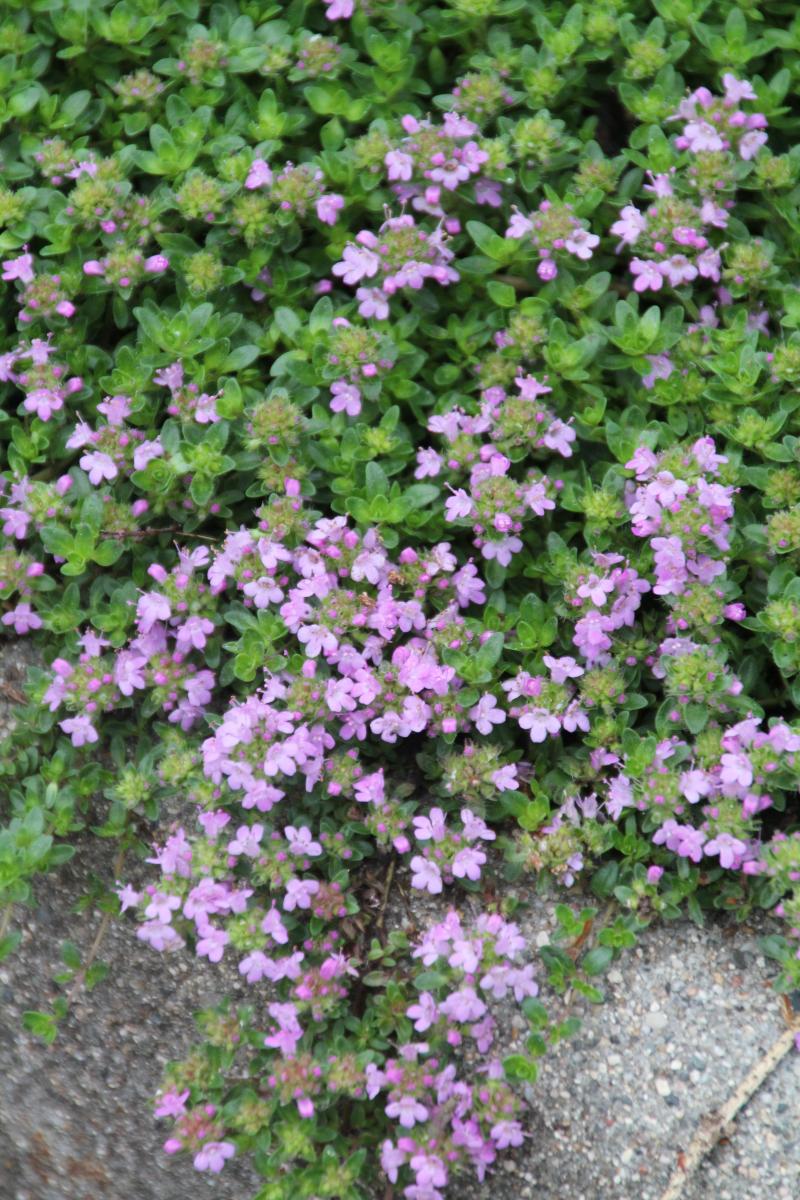
Creeping Thyme
Creeping Thyme (Thymus Serpyllum) is a low-growing and spreading plant that will only get about 4 to 6” tall but may spread from 8 to 12” wide. They appeal to sense of smell when leaves are rubbed between fingers or if the plants are bruised when stepping on them, as they are often used as a hardy ground cover. Plants begin producing their tiny, but showy purple flowers in June and continue to August. Thyme performs best in full sun.
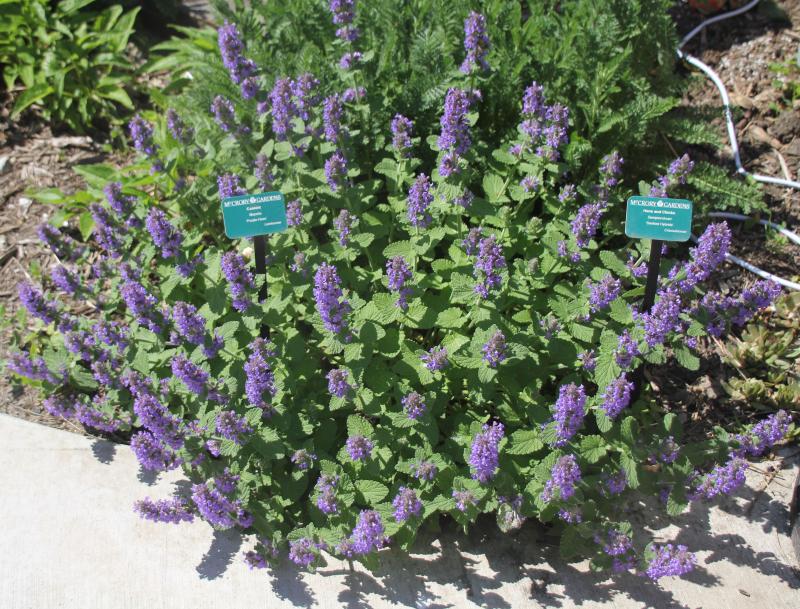
Catmint
There are several different varieties of catmint (Nepeta mussinii) that will range in height: 9 to 18 inches and spread: 1 to 1 1/2 ft. These hardy perennials appeal to the sense of smell by releasing a scent when leaves are rubbed between fingers, which may also be attractive to your cat. Small, pale purple flowers appear from May to September. Plants grow best in full sun to part shade.
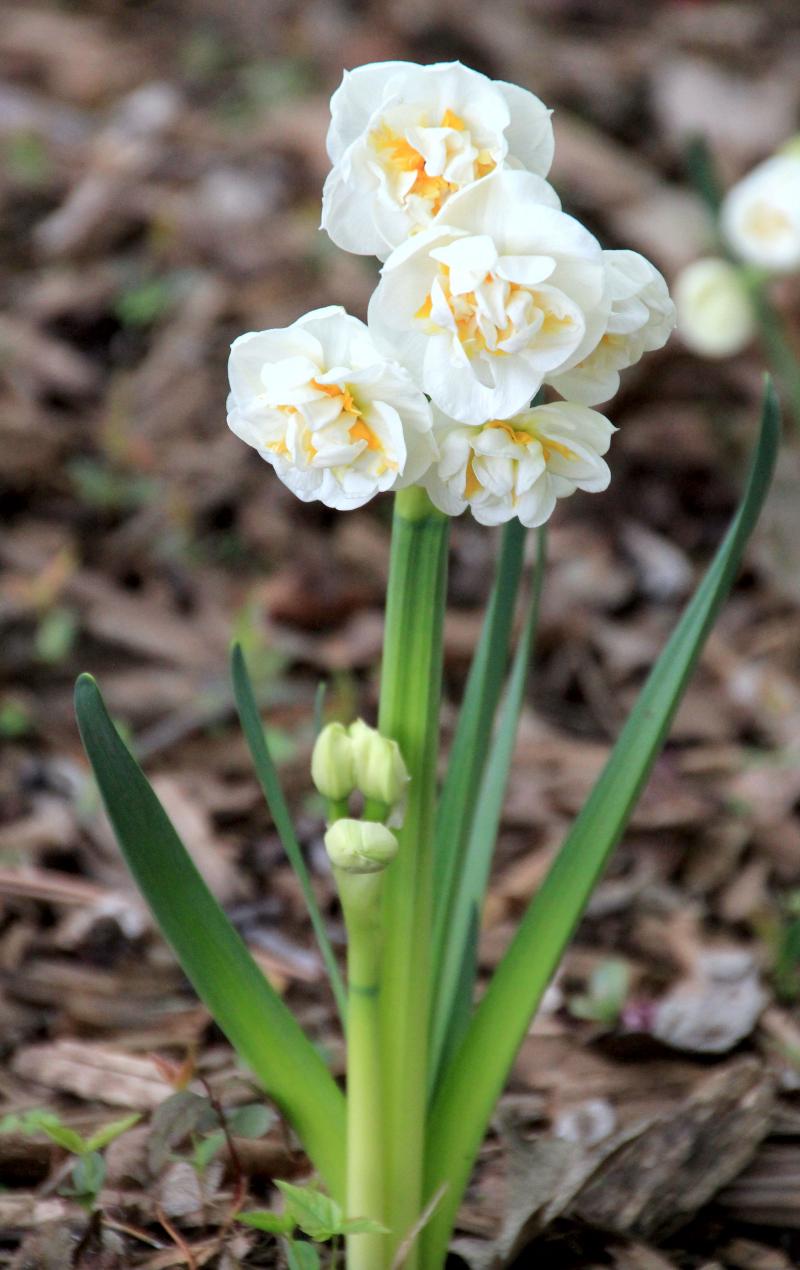
Daffodil
Daffodils (Narcissus hybrid) are a favorite, hardy, early spring flowering bulb that will grow to a height of 1 to 2 ft. with a 6 to 12 inch spread. The very fragrant flowers appeal to the sense of smell, as well as sight since they come in a bright yellow color, but there are other flower colors available too. Plant daffodils in full sun for best performance.
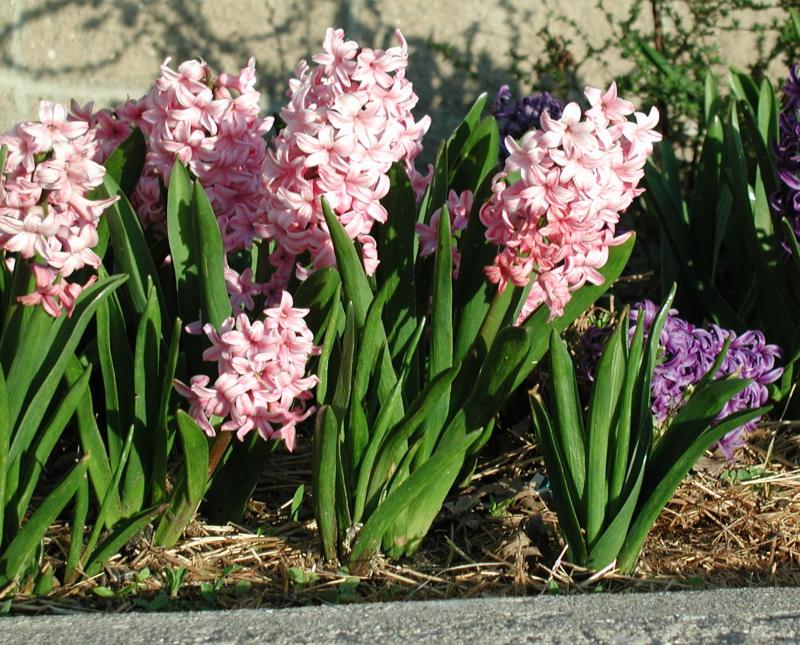
Hyacinth
Hyacinths (Hyacinthus orientalis) are another hardy, perennial, early spring-flowering bulb that grow 8 to 12” tall with a 4 to 8” spread. They appeal to sense of smell with their flowers which have a sweet, strong scent. Flowers range in color from white, pink, red, blue and purple and can be used in flower arrangements.
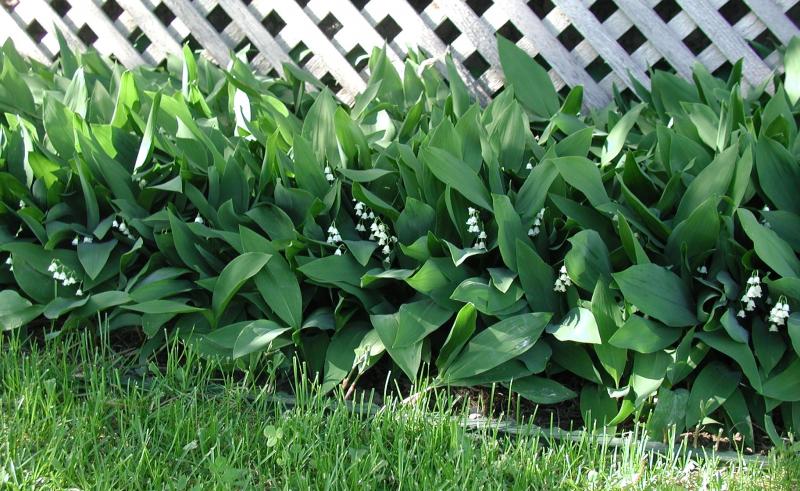
Lily-of-the-Valley
This is a wonderful ground cover plant that only grows 6 to 8 inches tall but may spread to several feet. The small, usually white, very sweetly scented flowers are borne in early spring on arching stems about 8” tall. Lily-of-the-valley (Convallaria majalis) is a hardy perennial that grows best in part-sun to shade but can tolerate full sun if it has ample moisture.
Appealing to Hearing
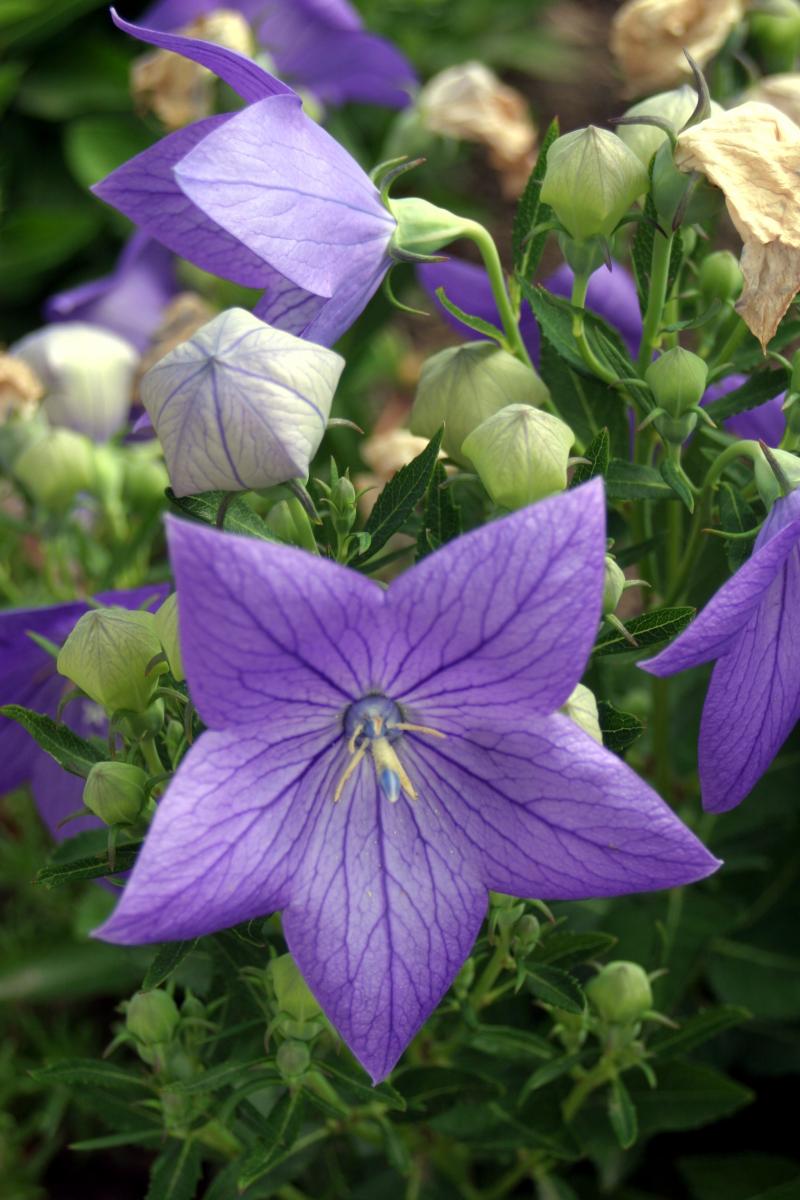
Balloon flower
Balloon flowers (Platycodon grandifloras) grow 1 to 2 1/2 ft. tall and spread 1 to 1 1/2 ft. wide. They appeal to the sense of hearing because the “inflated” buds make a popping sound when squeezed. Plants bloom from June to August, producing white, pink or a purple-blue, showy flowers. These hardy perennials perform best in full sun to part shade.
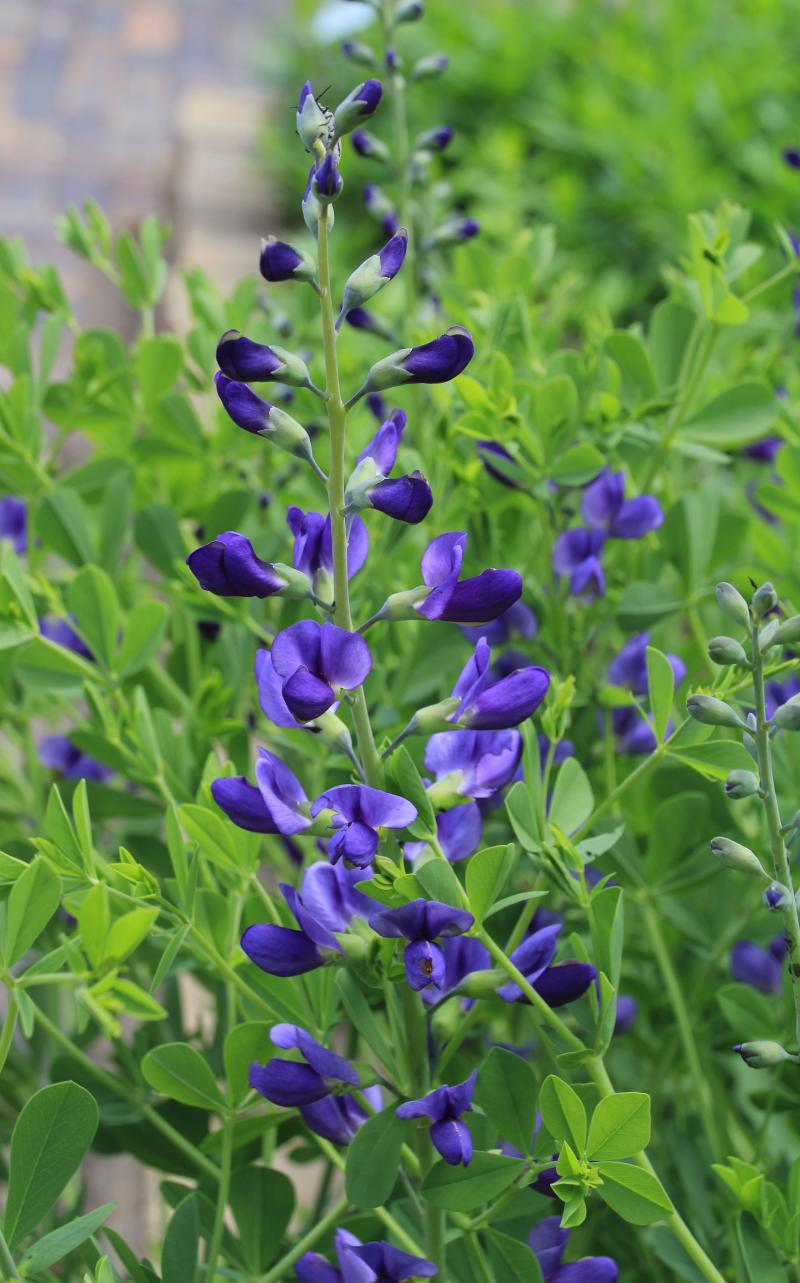
False indigo
False Indigo (Baptisia australis) is a hardy perennial that grows 3 to 4 ft. tall with up to a 3 to 4 ft. spread. It appeals to sense of hearing since it produces brown seed pods containing seeds that create a rattling sound when shook. The flowers range in shades of blue to yellow and appear from May to June. Plants Perform best in full sun to part shade and are a drought tolerant and long-lived plant, once established.
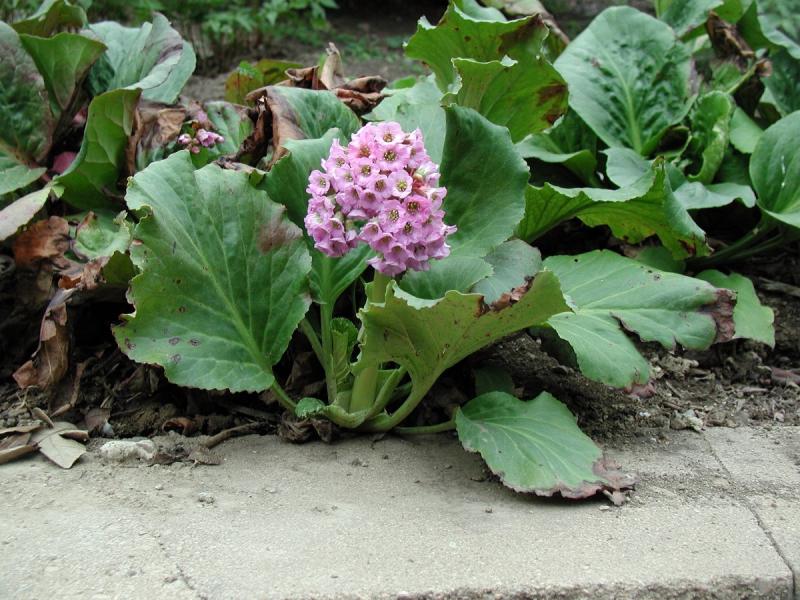
Pigsqueak
Pigsqueak (Bergenia cordifolia) grows about 8 to 12 inches tall with a spread of 1 to 1 1/2 ft. It is an interesting plant with its leathery foliage that can produce a squeak sound when rubbed together. It also has attractive and showy pink or white flowers from April to May and foliage that turns red to burgundy in the fall. This hardy perennial performs best in sun to part shade.
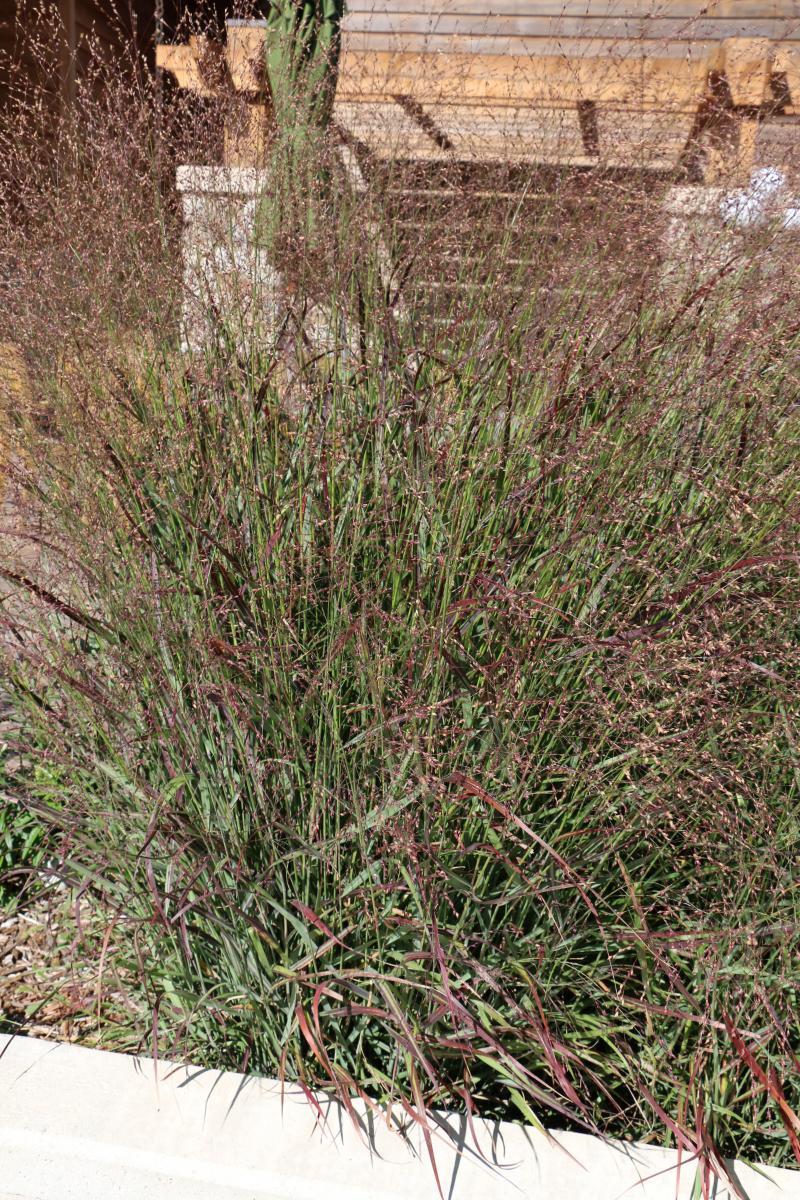
Switchgrass
Varieties of switchgrass (Panicum virgatum) grow from 3 to 5 ft. in height with a similar spread. Ornamental grasses like this appeal to the sense of hearing though the susurrations of their leaves and stems as they rub against each other when the wind blows. They also appeal to the sense of touch with their tall, leafy stems, and later by their seed heads which develop beginning in August. This grass is very drought tolerant once established and will also provide winter interest. It performs best in full sun.
Appealing to Taste
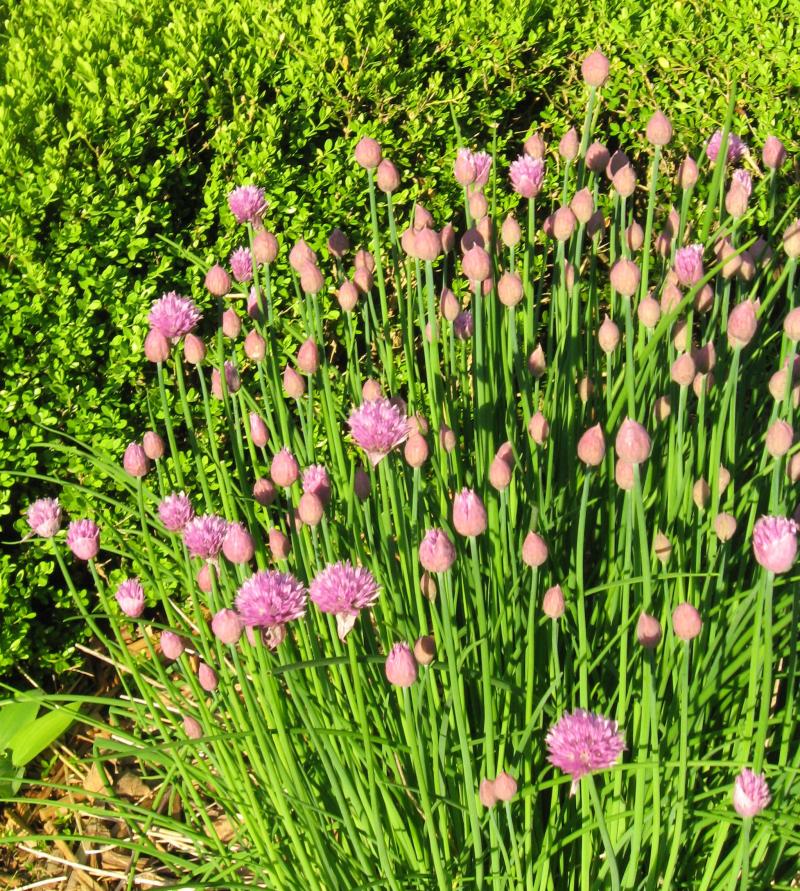
Chives
Chives (Allium schoenoprasum) are clumping plants that grow 12 to 18 inches tall with a similar spread. They appeal to the sense of taste, since they are commonly used as an herb to provide a mild, onion-like flavor. Plants bloom from April to May, producing pink to purple, showy flowers and narrow, round leaves. These perennial plants perform best in full sun to part shade.
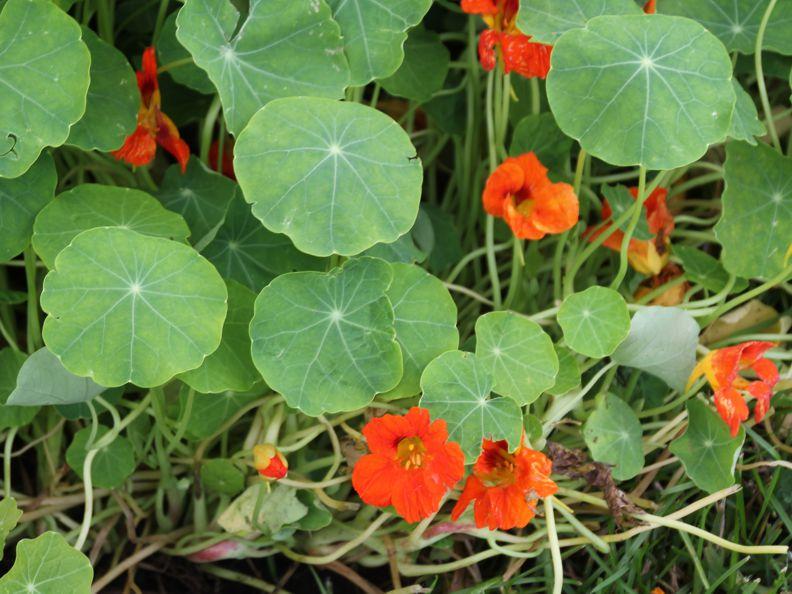
Nasturtium
Nasturtium (Tropaeolum majus) are interesting plants produce sprawling stems that may reach 1 to 2’ in height with a spread of several feet. The bright, showy flowers, available in red, orange, or yellow, are produced from May to September. The leaves are also interesting since the petiole comes out of the center of the back of the leaf. This annual performs best in full sun.
Appealing to Touch
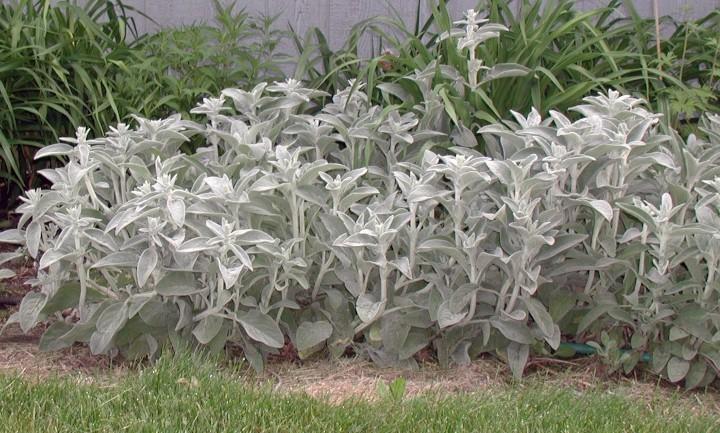
Lambs’ ears
Lamb’s ears (Stachys byzantine) is a very fuzzy-leaved plant that grows to a height of 9 to 18 inches tall with a spread: 1 to 1 1/2 ft. The fuzzy, furry foliage and stems appeal to the sense of touch and it also blooms from May to July. This hardy perennial is generally used as a groundcover in a full sun to partly shady location.

Satiny Wormwood
This particular wormwood (Artemisia schmidtiana) has exceptionally fine foliage with a very silky feel. It only grows about 9 to 12” tall with a 1 to 1 3/4 ft. spread. This often short-lived perennial performs best in full sun to part shade in well-drained soil. It is often used as a groundcover.
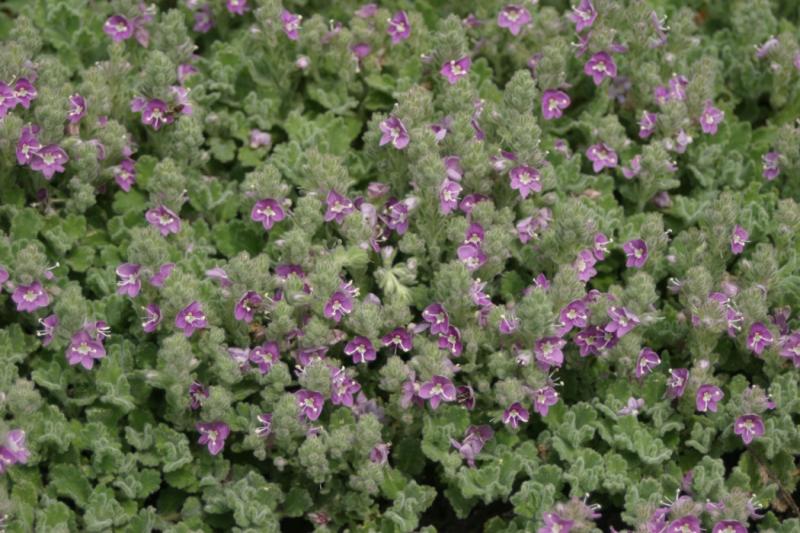
Wooly Thyme
Wooly thyme (Thymus pseudolanuginosus) is a low growing ground cover plant, only reaching a height of 4 to 6 inches with a spread of 6 to 12 inches. It appeals to the sense of touch because its foliage has fine hairs covering its leaves. This hardy perennial performs best in full sun. Pale pink, showy flowers may be produced mid-summer which often attract butterflies.
There’s More to a Sensory Garden than Just Plants!
A sensory garden does not need to contain just plants that appeal to the senses, but hardscapes, pathways, bird feeders, and water features can be used for added sensory opportunities. Hardscapes provide different textures that can be seen and felt. Water features provide another sensory experience providing opportunities for sight, sound, and touch. These other, non-plant features, are good attributes to consider adding to a sensory garden.
The use of several elements, beyond plants, add to the sensory experience and enables the opportunity for flexibility in users. Through the creation of sensory gardens, many people can experience the beauty of the outdoors through more senses than just sight. Take the time to experience the outdoors through all human senses and relax.



